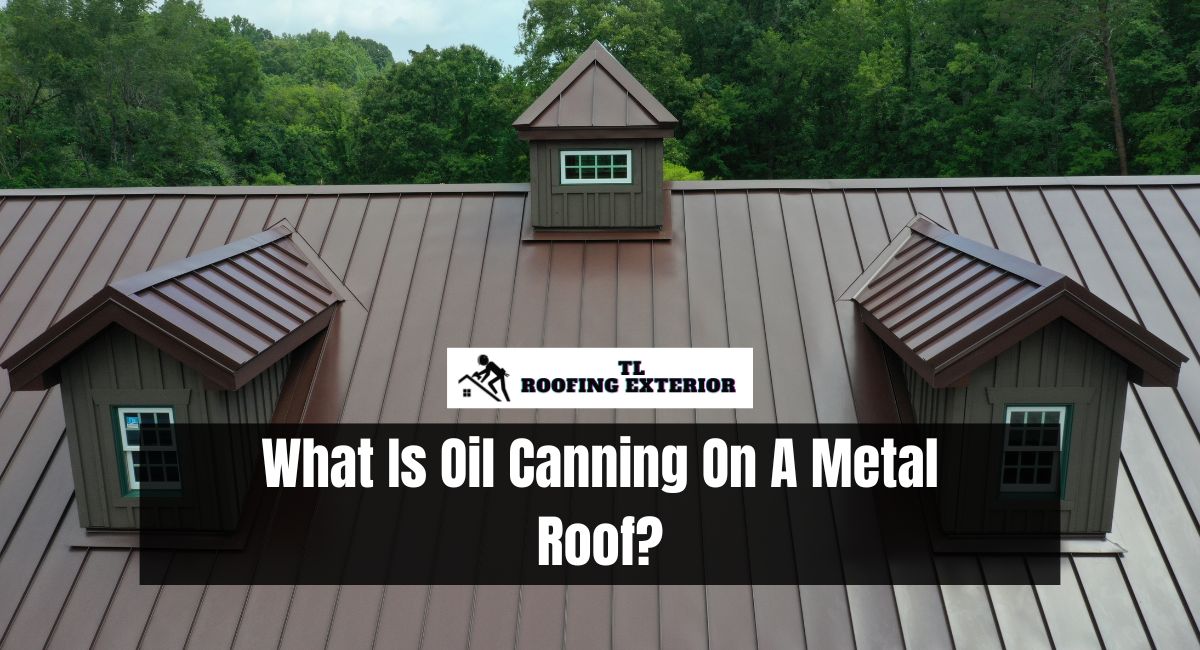Metal roofing is praised for its durability, energy efficiency, and aesthetically pleasing appearance. It is not, however, without peculiarities, one of which is a phenomenon known as “oil canning.”
This word refers to the visual waviness or distortion that can emerge on metal roofing panels’ flat portions. While it does not jeopardize the structural integrity of the roof, it can be an eyesore for homeowners.
In this post, we’ll look at what causes oil canning, how it affects your roof, and what steps you can take to reduce or eliminate it.
What Is Oil Canning On A Metal Roof?
The term “oil canning” refers to the visual waviness or distortion that can occur in flat portions of metal roofing and wall panels. This condition is also known as “stress wrinkling” or “elastic buckling.”
Oil canning is mostly an aesthetic concern that has no bearing on the performance or durability of the metal roof. It can, however, be a source of concern for homeowners or builders seeking a clean, level finish.
Causes of Oil Canning
- Material Stress: During the fabrication, transportation, and installation of metal panels, stresses can be introduced into the material, resulting in oil canning.
- Thermal Expansion and Contraction: As temperature changes, metal expands and contracts, which can contribute to oil canning.
- Installation Issues: Incorrect fastening or insufficient support may result in oil canning. Overtightening or misalignment of fasteners may also be a contributing factor.
- Substrate Irregularities: If the surface on which the metal panels are installed is not precisely flat, oil canning in the panels may result.
- Panel Design: Wider, flattened panels are more susceptible to oil canning than those with additional structural elements, such as ribs or striations.
Mitigation Strategies
- Material Selection: Some metals are less susceptible to oil canning than others. Oil canning may be prevented by utilizing thicker dimensions and high-quality metals.
- Panel Design: Choosing panels with structural elements like ridges or striations can help to minimize the appearance of oil canning.
- Installation Techniques: Correct installation, including correct fastening and thermal movement allowance, can reduce the risk of oil canning.
- Substrate Preparation: Ensuring that the substrate is perfectly flat can help to minimize oil canning.
- Finish and Color: Certain coatings and colors can assist in concealing the appearance of oil canning.
- Pre-stressing or Pre-Curving: To reduce oil canning, some manufacturers offer pre-stressed or pre-curved panels.
- Consult Professionals: To minimize oil canning, consult with architects, engineers, and installers who are familiar with best practices for installing metal roofing.
Acceptance and Warranty
It’s important to note that oil canning is often considered a natural occurrence in metal roofing and wall panels, and many manufacturers exclude it from their warranties. If the appearance of oil canning is a significant concern for you, discuss it with your roofing contractor and material supplier before proceeding with your project.
Is Oil Canning Normal On A Metal Roof?
Oil canning is a prevalent phenomenon in metal roofing, characterized by visible undulation or distortion in the panels’ flat areas. Although it is generally regarded as an aesthetic rather than a structural issue, it can be unsettling for some homeowners.
Oil canning can be caused by factors such as material quality, installation techniques, and thermal expansion. To mitigate this effect, some manufacturers offer “stress skin” or “leveled” panels. If oil canning is a concern, consult a roofing expert about mitigation strategies.
How Do You Reduce Oil Canning?
Reducing oil canning in metal roofing involves several strategies:
- Material Selection: Opt for thicker metal or high-tension steel, which is less prone to oil canning.
- Panel Design: Choose panels with striations, stiffening ribs, or embossing to minimize visible waviness.
- Proper Installation: Ensure that the roof deck is level and that panels are installed without over-tightening the fasteners, which can cause stress and distortion.
- Thermal Management: Allow for thermal expansion and contraction by using appropriate fastening systems and clips.
- Quality Control: Inspect panels before installation and avoid using any that already show signs of oil canning.
- Consult Professionals: Work with experienced installers who understand how to minimize oil canning.
Conclusion
Although oil canning does not affect the performance of a metal roof, it can be an aesthetic nuisance. It is frequently caused by natural variations in the metal, installation methods, or external factors such as temperature fluctuations.
While it is difficult to completely eradicate oil canning, there are ways to minimize its appearance, such as selecting a metal with a thicker gauge or striations.
Read More: What Is The Best Color For Metal Roofing?
